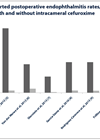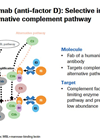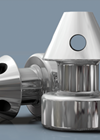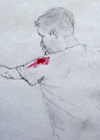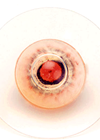Ophthalmology
Practice tips: Directions in cataract surgery services and preventing postcataract endophthalmitis
Future directions in the delivery of high quality cataract surgery services and approved intracameral prophylactic approaches to lowering the risk of postcataract infective endophthalmitis were debated by consultant ophthalmic surgeons in a recent London seminar, held at the Royal Society...
Simulated ocular surgery: pars plana vitrectomy and scleral buckling surgery
See also Simulated ocular surgery and Simulated ocular surgery - strabismus surgery In this second article on ocular surgery simulation, we will discuss how vitreoretinal surgery can be simulated using high tech virtual reality modalities such as the Eyesi, as...
Oculoplastics: an evolving specialty
Consultant Ophthalmic and Oculoplastic Surgeon Raman Malhotra provides an insight into this increasingly popular subspecialty of ophthalmology. Oculoplastic surgery refers to plastic, reconstructive and aesthetic surgery of the eyelids, the surrounding facial areas, orbits and lacrimal system. Its scope has...
Genetic profiling for personalised healthcare solutions in AMD – an update
Age-related macular degeneration (AMD) is a multifactorial condition influenced by genetics and lifestyle factors (Table 1). This article outlines several recent advances in AMD genetics, as well as evolving therapeutic concepts and established practical measures for the treatment and /...
Ophthalmology in ancient india, Sushruta’s time and the modern era
While reading an article related to the history of Indian ophthalmology, I came across this description of a surgical procedure: “The doctor warmed the patient’s eye with the breath of his mouth. He rubbed the closed eye of the patient...
Open source and tele-manufacturing for ophthalmology
Open source or crowd-sourcing and crowd-collaboration are concepts almost always associated with software and public online projects such as Wiki project. Never had I imagined that my team would apply the same principle in ophthalmology. Just less than a month...
Improved efficacy expected with second-generation microinvasive glaucoma surgery (MIGS) devices
Microinvasive surgical approaches to primary open-angle glaucoma (POAG) offer minimally traumatic options for effective intraocular pressure (IOP) reduction in appropriately selected glaucoma patients. Increases in laser trabeculoplasty rates and wider adoption of glaucoma drainage device filtration procedures, together with the...
Intravitreal injections delivered by ophthalmic clinical nurse specialists
Intravitreal injections of the anti-vascular endothelial growth factor (anti-VEGF) agent ranibizumab, for the treatment of wet age-related macular degeneration (AMD) was approved by National Institute for Health & Care Excellence (NICE) in 2008 [1]. The Manchester Royal Eye Hospital (MREH),...
Refractionist’s shoulder?
After hearing the letter-box, I walked to the front door and stooped down to collect my latest edition of Eye News. I winced. Still, at least it would give me something to pass the time on this, my first day...
Anterior segment imaging: a photographer’s view
My name is Rosalyn Painter and I work within the vision science and ophthalmic imaging team at Bristol Eye Hospital, where we cover all aspects of imaging within the hospital, including fluorescein angiograms, fundus photography, optical coherence tomography (OCT), slit-lamp...
Simulated ocular surgery
See also Simulated ocular surgery - strabismus surgery and Simulated ocular surgery: pars plana vitrectomy and scleral buckling surgery This is the first of a series of articles that will have three aims. Firstly, to demonstrate why simulated ocular surgery...
Is optician led service an answer to ever increasing demand on eye emergency clinics?
The demand for eye casualty appointments has been steadily increasing in the UK, leading to pressures on the hospital emergency services. The incidence of presentations to eye casualty services has been estimated at 20-30 per 1000 per year [1]. Evidence...


